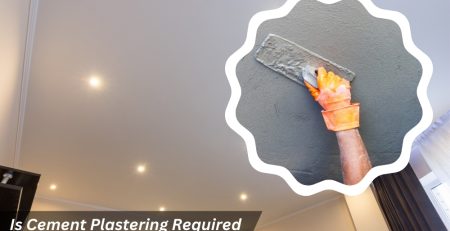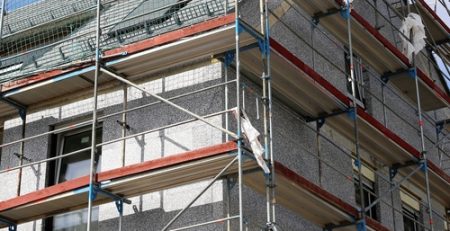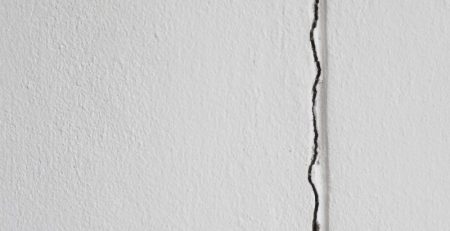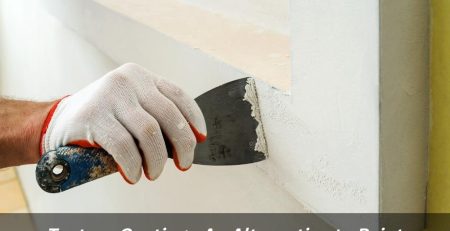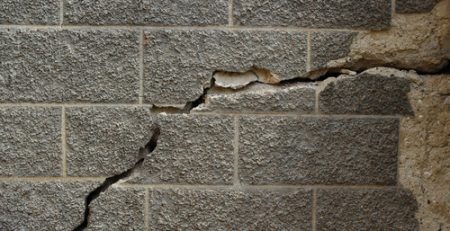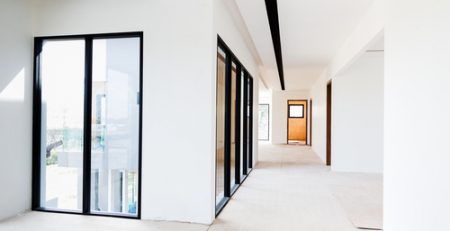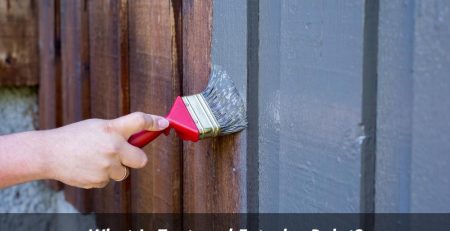How To Prevent Wall Cracks from Recurring After Repair?
Wall cracks can be a real headache for homeowners. They not only mark the appearance of your walls but can also be a sign of underlying structural issues. If you’ve recently repaired wall cracks, you’re probably eager to prevent them from coming back. In this comprehensive guide, we’ll delve into the causes of wall cracks, how to prevent them from recurring after repair, how to inspect your walls for cracks, what to do if you find a wall crack, and even how to prevent cracks in new walls. Let’s get started!
What are the causes of wall cracks?
Understanding the root causes of wall cracks is the first step in preventing their recurrence. Here are some common culprits:
- Settlement cracks: These cracks occur when your home’s foundation settles over time, causing stress on the walls. This is common in older houses and can result in vertical or diagonal cracks.
- Moisture intrusion: Moisture is a silent enemy of walls. When water seeps into the walls due to poor drainage, leaky roofs, or plumbing issues, it can weaken the structure and lead to cracks.
- Temperature fluctuations: Extreme temperature changes can cause your walls to expand and contract, leading to hairline cracks in concrete, especially in exterior walls.
- Poor construction: Inadequate construction practices, such as insufficient reinforcement or improper mixing of concrete, can result in structural cracks that may reappear if not addressed correctly.
- Soil movements: Often factors like nearby tree roots or soil erosion, can exert pressure on your walls, leading to cracks.
What steps can you take to ensure that wall cracks do not reappear after undergoing repairs?
Now that you know the common causes, here’s how you can prevent those pesky wall cracks from making a return appearance:
- Address the underlying issue: If the cracks were caused by structural problems, like settlement cracks or soil movements, it’s essential to fix the root cause. Consult with a structural engineer to identify and address these issues properly.
- Proper drainage: Ensure your property has a well-designed drainage system that directs water away from your home’s foundation. Gutters, downspouts, and proper grading can help keep moisture at bay.
- Monitor humidity levels: In areas with high humidity, consider using a dehumidifier to maintain optimal indoor humidity levels. This can prevent moisture-related cracks.
- Regular inspections: Schedule routine inspections of your walls, both inside and outside. Look for hairline cracks in concrete, as catching them early can prevent them from worsening.
- Paint and seal: Apply a high-quality waterproof paint or sealant to your exterior walls. This acts as a protective barrier against moisture and temperature fluctuations.
- Reinforce weak areas: If you’ve identified weak spots in your walls during the repair process, reinforce them with additional materials like mesh or fibreglass tape before painting or finishing.
- Properly maintain your home: Regularly maintain your plumbing system, roof, and foundation. Promptly fix any leaks, plumbing issues, or roof problems to prevent moisture intrusion.
How to inspect your walls for cracks
Regular inspections are key to spotting cracks before they become a major issue. Here’s how you can inspect your walls:
Exterior Walls:
- Start by visually examining the exterior walls of your home. Look for any visible cracks, especially near corners and openings like doors and windows.
- Use your fingers to run over the surface gently. Hairline cracks in concrete may be hard to see but can be felt. Pay attention to areas where different materials meet, as cracks often occur at these junctions.
Interior Walls:
- Inside your home, inspect the walls in each room. Focus on areas where there is a noticeable change in temperature or humidity, like bathrooms and kitchens.
- Again, use your fingers to check for any imperfections. Hairline cracks may be small, so be thorough in your examination.
Tools:
- To get a closer look at hard-to-reach areas, consider using a flashlight and a magnifying glass. These tools can help you spot even the tiniest of cracks.
What to do if you find a wall crack
So, you’ve spotted a crack during your inspection. What’s the next step? Here’s a simple guide on what to do:
- Assess the crack: Determine the severity of the crack. Is it a hairline crack or a more significant structural issue? Hairline cracks in concrete floors or walls are often superficial and can be repaired easily.
- Clean the area: Remove any loose debris or paint around the crack. Use a wire brush or a putty knife to clean the surface thoroughly.
- Fill the crack: For hairline cracks, use a high-quality crack filler or caulk specifically designed for concrete. Apply it according to the manufacturer’s instructions. Additionally, for larger cracks or structural issues, it’s best to consult a professional.
- Smooth and Paint: After the filler has dried, sand it down to create a smooth surface. Then, repaint the area to match the surrounding wall.
- Monitor: Keep an eye on the repaired area. If the crack reappears or worsens, it may be a sign of a more significant problem, and you should seek professional assistance.
How to repair a wall crack
Repairing a wall crack is a straightforward DIY task for small, non-structural cracks. Here’s a step-by-step guide:
- Gather your tools: You’ll need a crack filler or concrete caulk, a putty knife, sandpaper, and paint that matches your wall’s colour.
- Prepare the crack: Clean the crack as mentioned earlier, ensuring it’s free of dirt and loose material.
- Apply the filler: Squeeze the crack filler or caulk into the crack, filling it completely. Use a putty knife to smooth it out and remove excess material.
- Let it dry: Follow the manufacturer’s instructions for drying time. Typically, it takes a few hours to overnight.
- Sand and paint: Once the filler is dry, sand it down to make it flush with the wall’s surface. Then, paint over the repaired area to match the rest of the wall.
When should you call a professional wall crack repair company?
While small cracks in a house wall can frequently be addressed through DIY efforts, certain circumstances necessitate the involvement of professionals to effectively deal with cracks. Here are some indicators that it’s imperative to seek expert assistance:
- Large or growing cracks: If the crack is substantial or getting larger despite your repairs, it may indicate a serious structural issue that needs professional assessment.
- Multiple cracks: If you notice multiple cracks appearing in various areas of your home, it could be a sign of a more significant problem.
- Doors and windows misaligned: If doors and windows are suddenly sticking or not closing properly, it might be due to wall movement caused by a structural issue.
- Foundation problems: If you suspect your home’s foundation is compromised, such as sagging floors or visible foundation cracks, it’s imperative to consult a structural engineer.
- Persistent moisture issues: If moisture problems persist, despite your efforts to address them, it’s time to call in professionals who can identify the source and provide a lasting solution.
- Cracks in load-bearing walls: Cracks in walls that support the weight of your home require immediate attention from a structural engineer or experienced contractor.
How to prevent cracks in new walls
Preventing cracks in new walls starts with proper construction and ongoing maintenance. Here are some tips to ensure your new walls stay crack-free:
- Foundation inspection: Before building new walls, ensure the foundation is solid and properly designed. This provides a stable base for your walls.
- Use quality materials: Invest in high-quality construction materials and ensure that the concrete mix used is of the right consistency and strength.
- Professional installation: Hire experienced contractors who follow industry best practices. Properly installed walls are less likely to develop cracks.
- Control temperature and humidity: Maintain stable indoor temperatures and humidity levels. Rapid temperature fluctuations can stress walls.
- Regular maintenance: After construction, continue to monitor your new walls for any signs of cracks or settling. Promptly address any issues that arise.
- Protect against moisture: Implement proper moisture control measures, such as good drainage systems and waterproofing, to prevent moisture-related cracks.
- Inspect for defects: Conduct thorough inspections during and after construction to identify any defects or areas that may need reinforcement. This diligence further underscores the importance of wall crack repair and prevention as integral components of your construction and maintenance endeavours.
Conclusion
All in all, preventing wall cracks from recurring after repair or in new walls involves a combination of proactive measures and vigilance. By understanding the causes of cracks, conducting regular inspections, and addressing issues promptly, you can keep your walls looking pristine and structurally sound for years to come. Remember that while minor cracks can often be DIY projects, it’s crucial to involve professionals when dealing with significant structural concerns. With the right approach, you can enjoy crack-free walls and peace of mind in your home.
Are unsightly wall cracks causing you sleepless nights? At Jim’s Rendering Sydney, we understand the frustration that comes with recurring wall cracks. Our expert team is here to help you bid farewell to those bothersome cracks once and for all. With years of experience, we specialise in rendering solutions that not only repair existing cracks but also prevent them from making a comeback. From addressing structural issues to using top-quality materials and craftsmanship, we ensure your walls remain flawless and structurally sound. Don’t let cracks mar the beauty of your home; take action today. Contact Jim’s Rendering Sydney, your trusted partner in wall rendering, and enjoy peace of mind knowing your walls are in the hands of professionals who care. Your dream of crack-free, stunning walls is just a call away!


